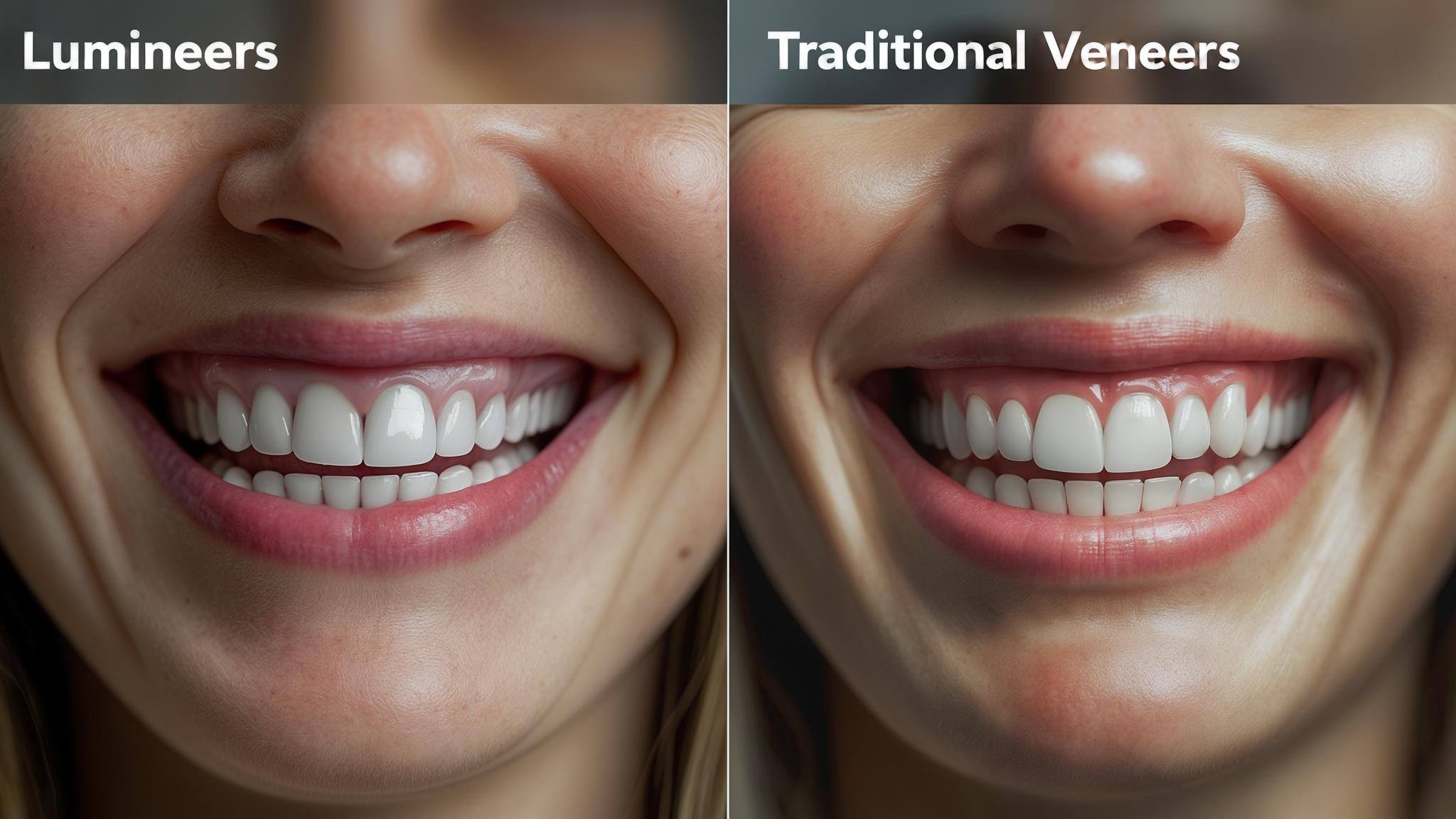Introduction
Cosmetic dentistry is a branch of dentistry that focuses on improving the appearance of your smile. It plays an important role in enhancing self-confidence and overall well-being through aesthetic dental solutions. Among the popular options in cosmetic dentistry are Lumineers and traditional veneers. While both aim to perfect your smile, they have distinct differences. This article will explore these differences to help you make an informed choice.
Understanding Veneers
What Are Traditional Veneers?
Traditional veneers are thin shells designed to cover the front surface of teeth, primarily for aesthetic purposes. They are commonly made from porcelain or composite resin, both known for their durability and natural appearance.
Procedure for Getting Veneers
- Initial Consultation: Your dentist evaluates your teeth and discusses your goals.
- Tooth Preparation: A small amount of enamel is removed to accommodate the veneer.
- Impressions and Fabrication: Impressions of your teeth are taken to create custom veneers.
- Bonding Process: The veneers are permanently attached to your teeth using a special adhesive.
Benefits of Traditional Veneers
- Aesthetic Enhancements: They can significantly improve the color, shape, and alignment of teeth.
- Durability and Longevity: With proper care, they can last 10-15 years or more.
Limitations of Traditional Veneers
- Tooth Enamel Removal: The process involves removing a layer of enamel, which is irreversible.
- Cost Considerations: Veneers can be expensive, often reflecting the quality of materials and expertise required.
Understanding Lumineers
What Are Lumineers?
Lumineers are a brand of veneers made from ultra-thin porcelain. They are designed to be placed over existing teeth with minimal or no preparation.
Procedure for Getting Lumineers
- Initial Consultation: Similar to veneers, your dentist assesses your needs.
- Minimal or No Tooth Preparation: Often, no enamel removal is necessary.
- Impressions and Fabrication: Custom Lumineers are crafted based on your dental impressions.
- Bonding Process: They are bonded to your teeth with a strong adhesive.
Benefits of Lumineers
- Minimal Invasiveness: Little to no enamel removal means less discomfort.
- Reversibility: Because they require minimal preparation, they can sometimes be removed or replaced.
- Aesthetic Enhancements: They offer a natural look and can correct minor cosmetic issues.
Limitations of Lumineers
- Potential for Less Durability: They may not last as long as traditional veneers.
- Not Suitable for All Dental Conditions: They may not be the best choice for significant cosmetic corrections.
Key Differences Between Lumineers and Traditional Veneers
Thickness and Material Comparison
- Lumineers: Known for their ultra-thin design, making them less invasive.
- Traditional Veneers: Thicker, requiring more enamel removal.
Tooth Preparation Requirements
- Lumineers: Minimal to no preparation needed.
- Traditional Veneers: Require significant enamel removal.
Aesthetic Outcomes
- Lumineers: Provide a natural appearance, ideal for subtle changes.
- Traditional Veneers: Offer customizable effects for more dramatic transformations.
Longevity and Durability
- Lumineers: Typically last 10-15 years.
- Traditional Veneers: Can last 15-20 years with proper care.
Cost Comparison
- Lumineers: Generally less expensive due to less preparation.
- Traditional Veneers: Cost more due to the intensive procedure and materials.
Who Should Consider Lumineers or Traditional Veneers?
Ideal Candidates for Lumineers
- Patients seeking minimal alteration to their teeth.
- Those with minor cosmetic issues that need correction.
Ideal Candidates for Traditional Veneers
- Patients with significant cosmetic concerns, such as severe discoloration or misalignment.
- Those looking for maximum durability and a long-term solution.
Conclusion
In summary, both Lumineers and traditional veneers offer significant benefits for enhancing your smile. The choice between them depends on your specific dental needs and goals. Consulting with a dental professional is crucial to determine the best option for you.
References
Call to Action
If you're considering improving your smile, schedule a consultation with a dental professional today. Feel free to ask questions or share your experiences in the comments section below.

